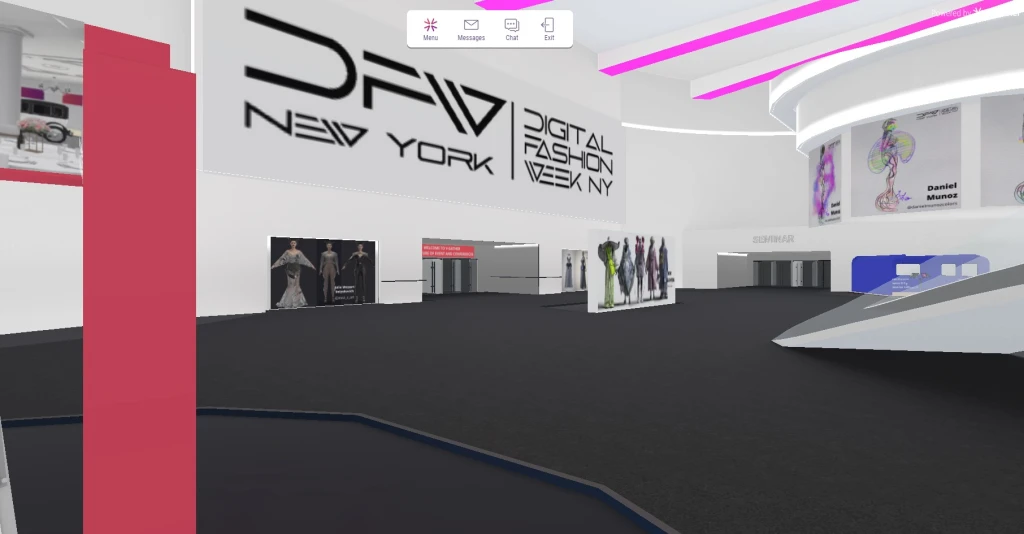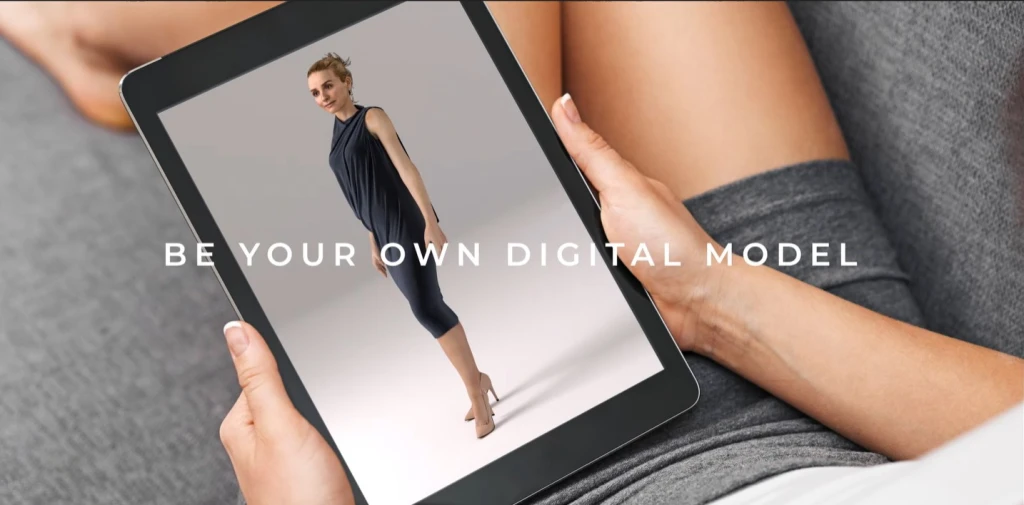Digital Fashion Week New York was the first virtual fashion week that I have attended. And for me, it was both an immensely informative and inspirational experience.
I signed up for the free-to-access panel discussions and the live exhibition. I was keen to get a sense of the content spoken about, how the interface worked, what overall the user experience was like, and – of course – explore the digital fashion collections.
Entering the virtual showroom

I logged into the virtual showroom which was powered by V-Gather, a virtual event hosting platform. Upon entry, instructions on how to navigate the showroom cropped up on screen and were easy to follow.
The showroom had two levels. Each level housed virtual exhibitions of digital fashion collections and artworks by several different creatives.
The exhibition stands resembled very much the same as those in traditional conference convention centres. So, in a sense, I felt like I had been here before.
I will admit, there was an eeriness about being in the showroom on my own. The plus side was there were no crowds or queues at the stands which meant I had complete freedom to examine each digital fashion collection for as long as I liked.
Future of fashion in Web 3.0
As I approached a stand, the name of the designer and their social media handle was clearly displayed next to the screen showcasing their collection.
One simple click on the screen enlarger icon and I was transported to a completely new setting. The music, scene layout and garments gave me a rare opportunity to peer into the minds of no doubt some of the most talented creators in 3D fashion.
Each digital artist had their own story to tell – and their work was not constrained to a runway, like in traditional fashion shows, in order to tell it.
The digital fashion designers utilised the 3D space as they felt would best portray their collections. It was an amazingly immersive experience (I will take a look at the collections in more detail in another post).
This is something I believe Dan O’Connell from Brandlab360 touched on during the “A 360 view of Fashion: innovations that influence fashion now” panel discussion yesterday.
He pointed out how ecommerce is an “out of date”, “single-user” platform. I tend to agree with him.
Web 3.0 and gamification are rapidly changing the mode of how consumers buy products, including shopping for clothes. Dan predicts that within the next 8-12 months, we will see a greater cultural shift towards virtual shopping, socialising and ways of doing business.
“Consumers are spending more time on Web 3.0 platforms than on ecommerce sites,” he says. “People are now looking to shop for real products in an immersive way.”
This alludes to the increasingly social aspect of shopping that Web 3.0 offers us.
As Ashley Crowder from VNTANA, a social augmented reality company, expressed during the panel discussion, “Kids want to dress their avatar and go to the mall in the metaverse. They’re even asking their parents for their pocket money in Roblox as opposed to real cash.”

Nicole Reader from Modern Mirror, a 3D body scanning application, touched on the importance of people owning their own data and choosing who to share it with.
“Modern Mirror is not just for try on and fit,” she says. “It serves as another revenue stream for models to license out their data instead of attending numerous calls.”
The fact that Web 3.0 is relatively new to most mainstream consumers and brands, it is affording startups and independent creatives countless opportunities to experiment and shape experiences in the metaverse.
It is a playground for both the courageous creative and everyday consumer. It is about taking ownership of your personal data, socialising with friends whilst consuming products and creating a unique identity in a boundless world.
All of this whilst reducing your carbon footprint by not buying fast fashion doesn’t seem like such a bad deal. There is the issue of digital carbon that comes with internet servers, 4G and data, however. But that’s a story for another day.